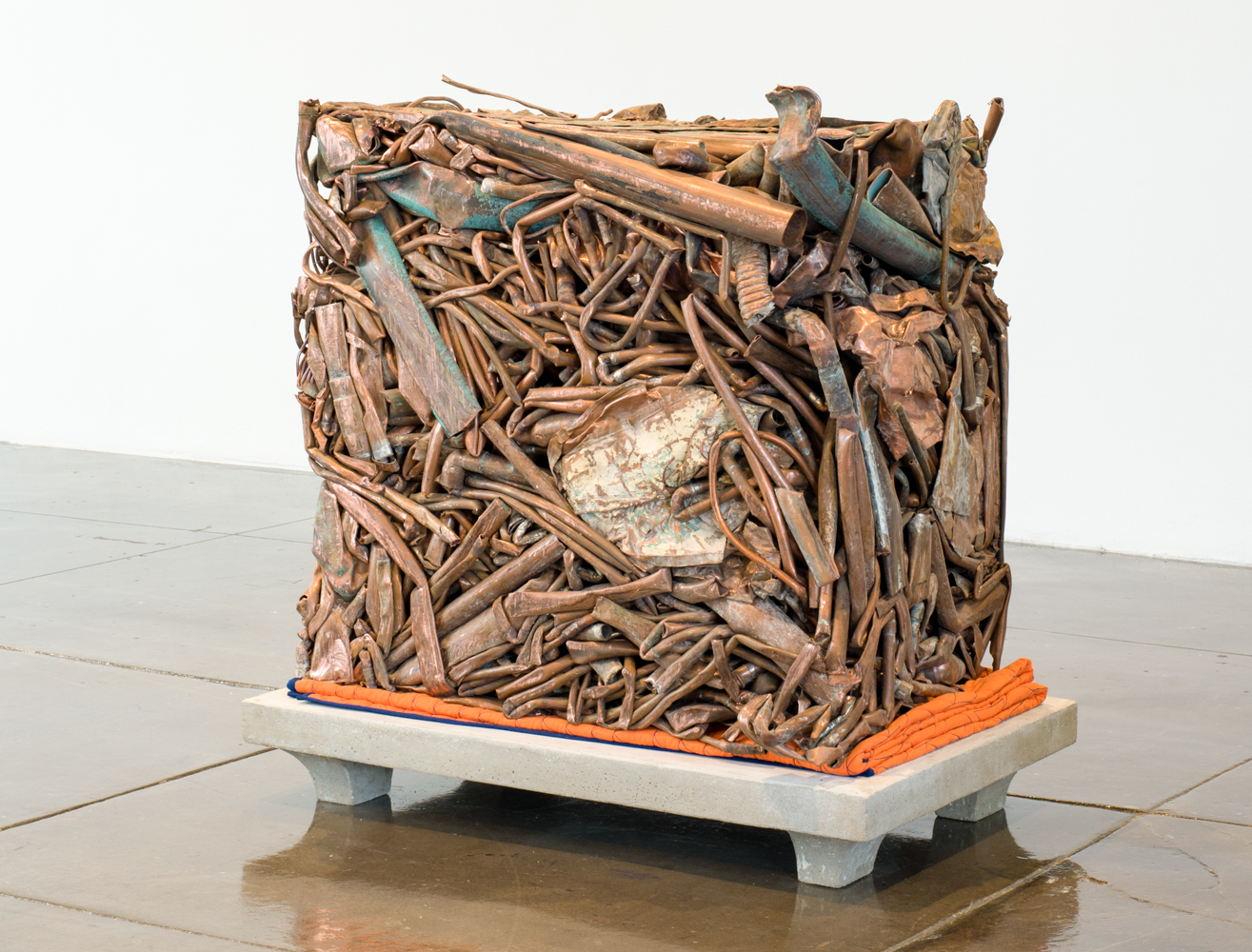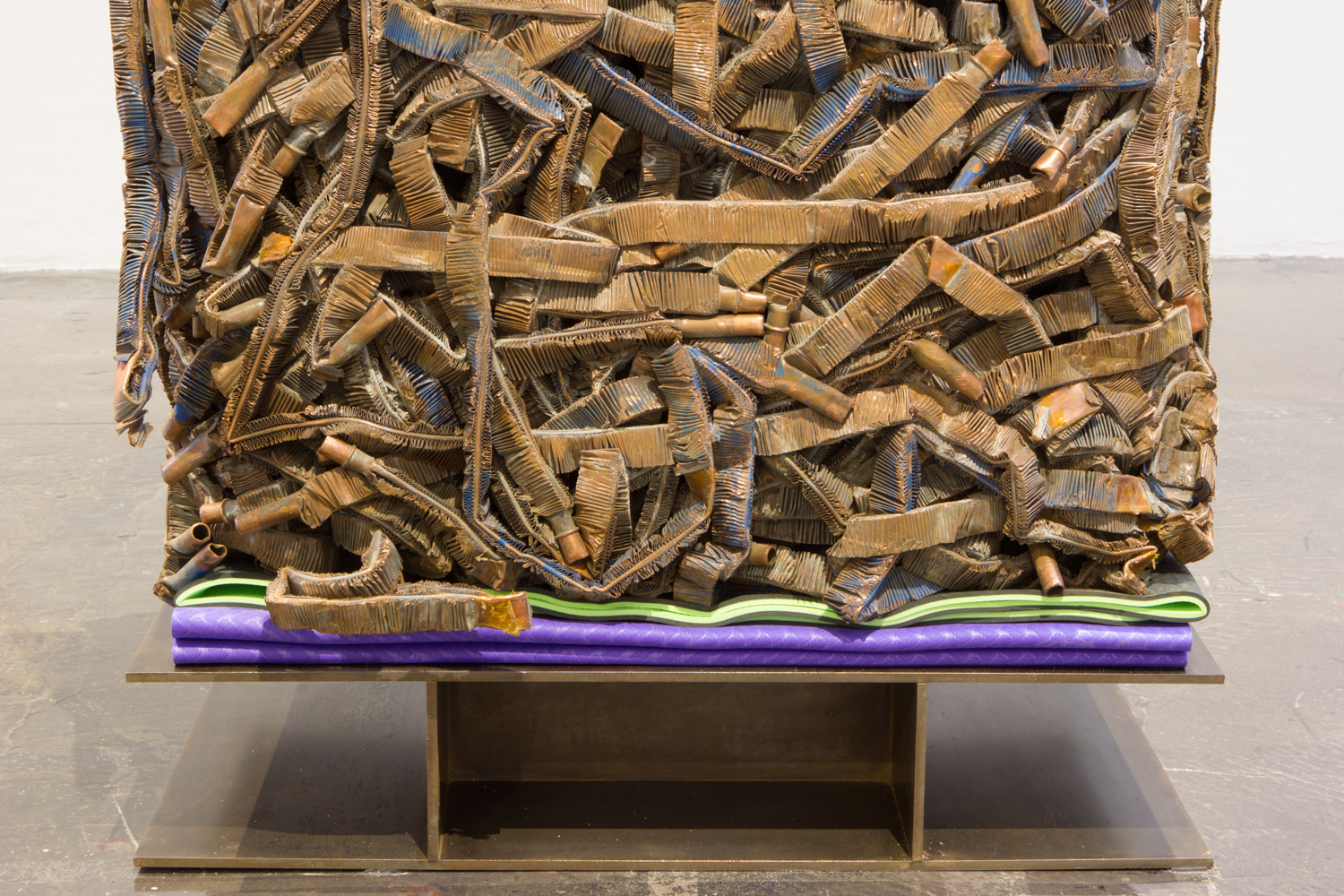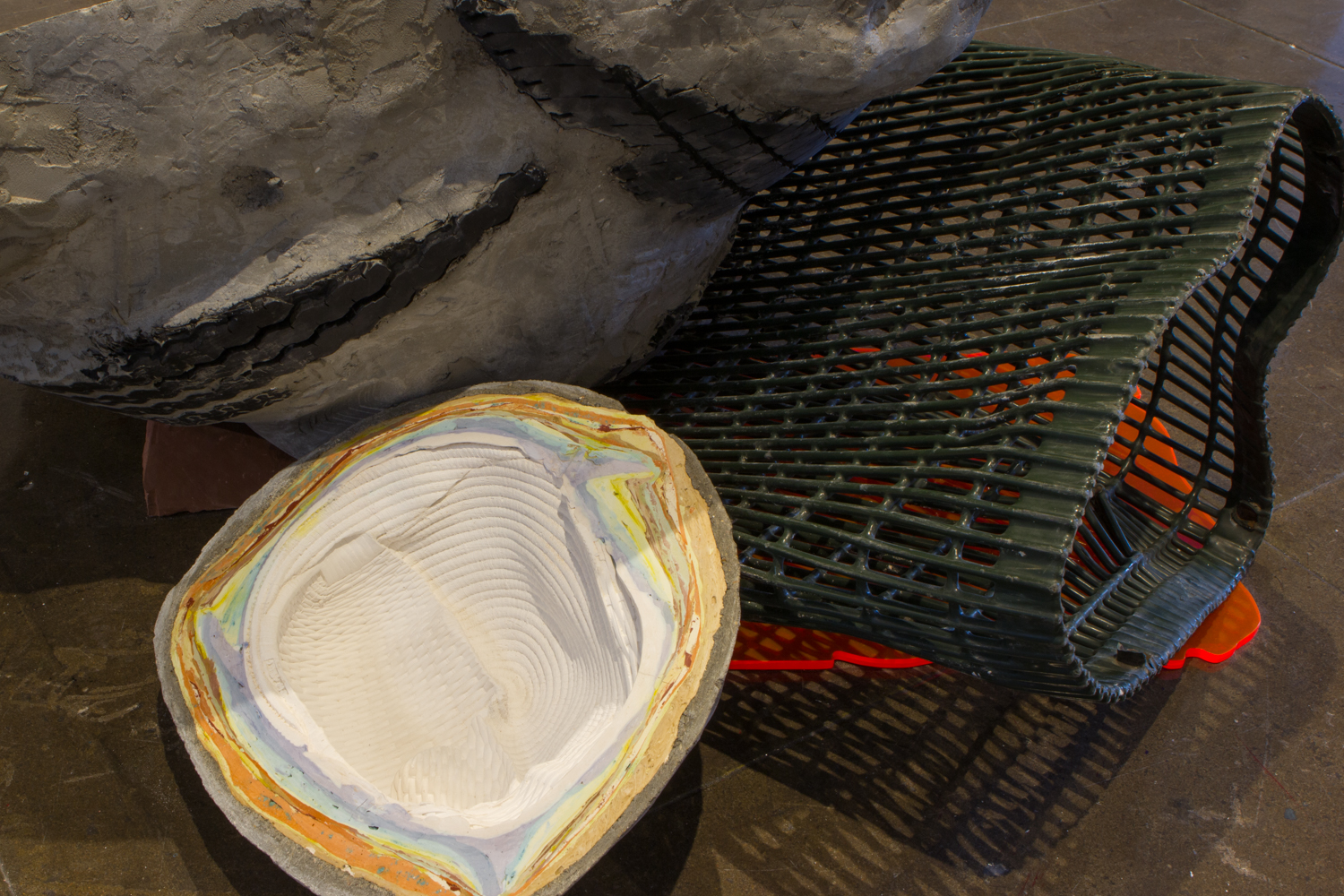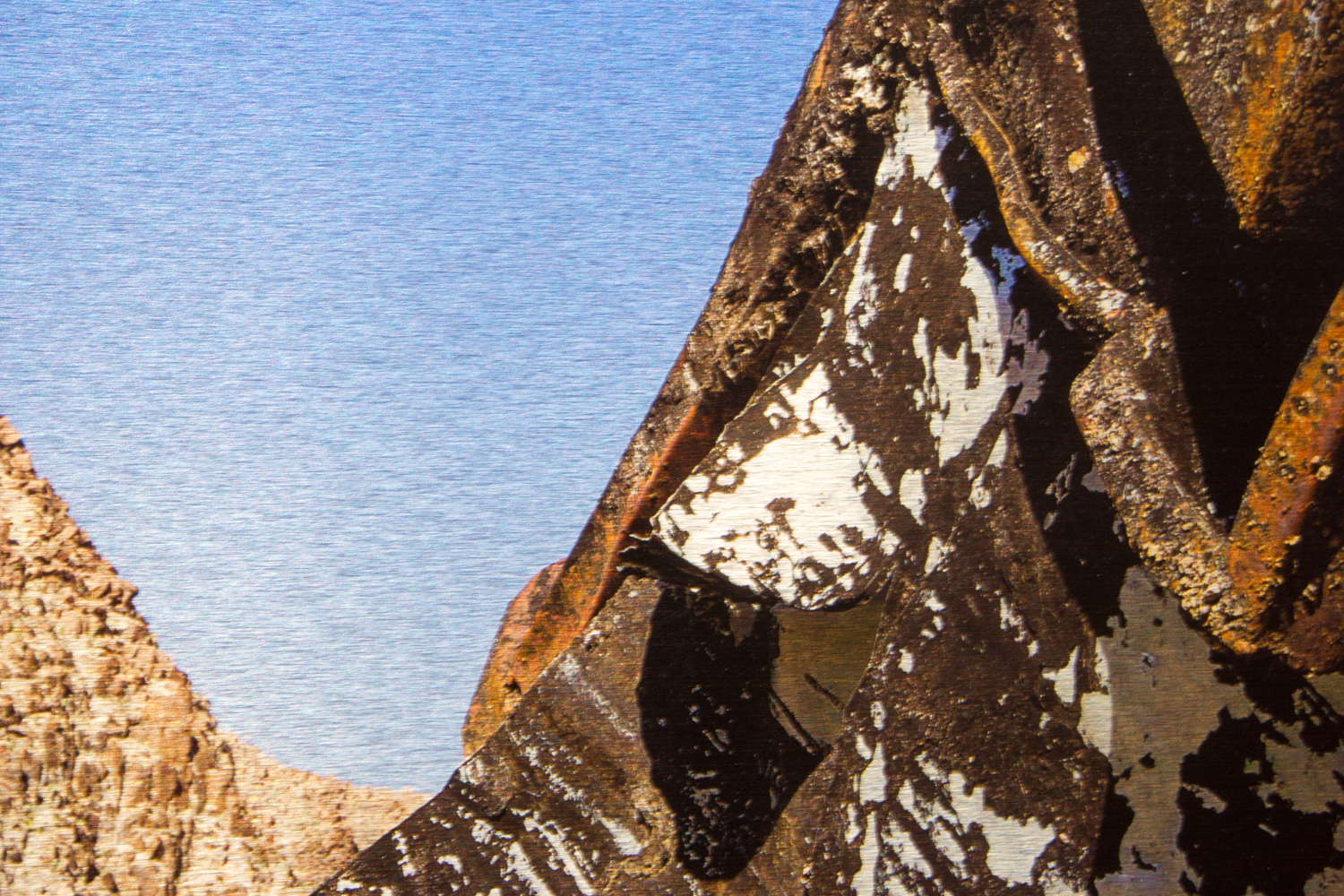















Salv., 2016 Artpace (San Antonio, TX) PDF of gallery notes Essay by Denise Markonish
Salv. was originally commissioned and produced by Artpace San Antonio, in collaboration with Recycled Artist in Residency, Philadelphia. Special thanks to Sullivan's Scrap Metal.
List of works: Old Copper Futures: 1200 lbs. of #2 scrap copper from Monterrey Iron & Metal, San Antonio, TX, 2016 (copper, steel, yoga mats, 48 x 22 x 26 inches) Old Copper Futures: 977 lbs. of #2 scrap copper from Sullivan’s Scrap Metal, Hatboro, PA, 2016 (copper, concrete, silicone, 32 x 35 x 22 inches) Old Copper Futures: 951 lbs. of #2 scrap copper from Revolution Recovery, New Castle, DE, 2016 (copper, concrete, blanket, 42 x 26 x 39 inches) Thunder Egg, 2016 (gypsum cement, concrete, trashcan, acrylic, 30 x 60 x 56 inches) Hot Mix, 2016 (gypsum cement, aluminum slag, 12 x 30 x 20 inches) Asphalt Manifest: Evidence, 2016 (photopolymer gravure (asphaltum on rag paper) edition of 7, classification folder, 15 x 20.5 inches) Asphalt Manifest: Landscape, 2016 (photograph on aluminum, 19 x 30 inches) He’s not heavy, he’s my sister, 2016 (video and driver’s side truck mirror, 24 x 18 x 10 inches)Notes: I started thinking about scrap copper a few years ago, drawn to the ways this infinitely recyclable material wears the patina and form of its most recent incarnation. In preparation for my Artpace residency, I spent this past summer as artist-in-residence at RAIR/Revolution Recovery, a three-acre site in Philadelphia where 400 tons of material are processed and mostly diverted from landfills on a daily basis. I paid attention to trash as it moved through this system, and watched as materials were sorted, shredded, and hydraulically compacted to fit into smaller footprints.
This year, I made several visits to West Texas, where space isn’t at such a premium. I’ve been wondering about how the contours of landscape—its density or use—affects our relationship to natural resources, labor, and time. The possibility for certain goods to be indexed to a commodities market makes determining the value of things like life, labor, and love feel all the more impossible. In addition to the physical space and support (a ground floor studio with a roll-up door, gantry crane, and Riley Robinson were all key in making this work), I am grateful for the time alongside residents Kim Faler and Kim Morgan, and our conversations with curator Denise Markonish. During this fall’s hot mix of queasy politics, I felt solidarity in crafting meaning with remnants—dirt, rubble, bodily fluids—and claiming space for the details and scraps. -LCR, Nov 1, 2016
Reviews: Laura Wellen, Texas Arts & Culture